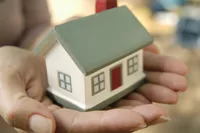Purchasing a new home is a busy and exciting time with a lot of responsibilities and usually a long to-do list. One of the most crucial items on that list should be a proper environmental home inspection. This not only protects your health, but avoids the burden of expensive cleanup fees after the closing.

The first step is to hire a reputable home inspection firm and insist on careful evaluation of any environmental issues that might be present in or under the house, and on the property. The results of this inspection should be reviewed with the seller. The next step is to retain a competent environmental consulting firm to resolve any issues that are discovered during the inspection. The responsibility for the costs of any remediation work should be clearly stated in the agreement of sale.
The following are a variety of important factors that should be tested both outside and inside the house in order to protect your family’s health, save money and help restore the environment:
Outside the house
—Underground storage tanks: If the home is or ever was heated by oil from an underground storage tank, it should be tested for leakage or decommissioned if no longer in use. Soil samples from near the tank should also be tested for contamination. Cleanup from leaking underground storage tanks is very costly. Make sure to get leak insurance for any active heating oil tanks on the property.
—Private wells: If the home has a private well, a water test for contamination and safety should be conducted, as it is harmful to drink contaminated water.
—Septic systems: A home using a septic system or similar soil absorption system should be tested prior to purchase to avoid costly upgrade or replacement, or unsanitary or dangerous site conditions from abandoned septic systems.
Inside the house
—Asbestos: Flooring, walls, ceiling tiles, boilers and pipes should be tested for asbestos, which becomes problematic if asbestos-containing materials crumble, flake or deteriorate through activities like cleaning, accidental damage or renovation.
—Radon gas: A screening should be conducted, especially in the lower levels of the house. Radon is a cancer-causing radioactive gas that is undetectable by human senses.
—Lead: Interior and exterior painted surfaces should be tested for the presence of lead. This is especially true for any building that was built prior to 1978. Lead enters the dust and air inside a home when surfaces with lead-based paint deteriorate or are scraped, sanded or heated in paint-stripping procedures. Lead can also be present in water lines in which lead-based solder was used.
—Mold: Wood, ceiling tiles, wallpaper, carpets and insulation should be inspected for mold. Mold can cause respiratory illness and allergic reactions and is usually a sign of unacceptably high moisture levels in a home.
JOHN BRENNAN is the president of Brennan Environmental, Inc. (BEI), an environmental consulting firm located in Summit, NJ. He can be reached at (908) 918-1702; www.bei-env.com.





















